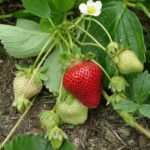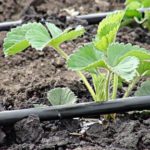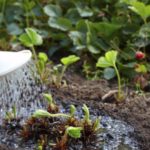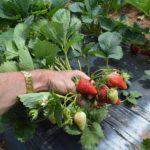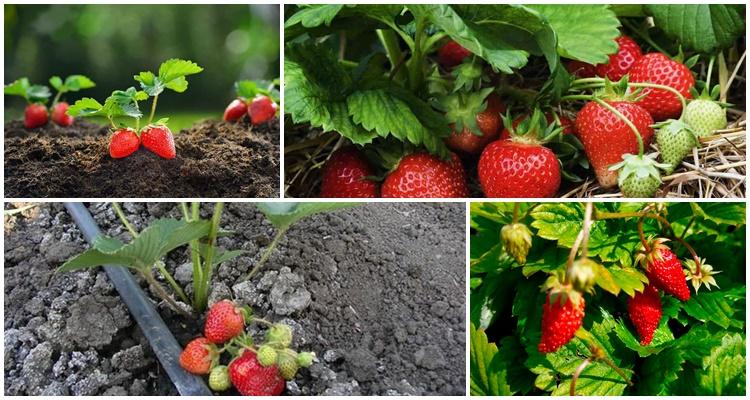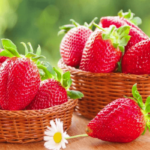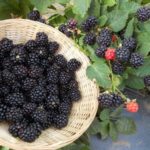Many owners of their personal plots are engaged in growing sweet and juicy berries. New selections always attract the attention of gardeners. They started growing Portola strawberries in Russia recently. The variety is just being tested in different farms across the country. It is important to know the features of plant care, the advantages and disadvantages of the crop in order to get a good harvest.
- Description and characteristics of the Portola variety
- The main advantages and disadvantages of strawberries
- Subtleties of growing a plant
- Soil preparation
- Planting scheme
- Rules for caring for crops
- Watering and fertilizers
- Loosening, weeds and removal of whiskers
- Wintering
- How to deal with diseases and pests?
- Reproduction methods
- Collection and storage
Description and characteristics of the Portola variety
Portola is the result of the efforts of American breeders. A new strawberry variety has been developed in California. The remontant crop is characterized by long fruiting periods. The first berries are harvested in early summer, the main harvest is in autumn. The ovary forms on the bushes every month and a half.
The average weight of ripe strawberries reaches 30 and sometimes 40 grams. The shape of the fruit is conical, the color is rich red. The taste is dominated by sour notes. The first berries are larger; as the season ends, Portola becomes smaller.
The main advantages and disadvantages of strawberries
Portola is a rather capricious plant that requires constant care.
Subtleties of growing a plant
Neutral or slightly acidic soil is suitable for growing the crop. If the soil on the site does not meet the requirements, they import other soil or prepare the mixture themselves.
Soil preparation
The place for planting strawberries is prepared in advance:
- Dig up the area and remove debris, weeds and remnants of the root system of grass and other vegetation.
- Add organic fertilizers and ash to the soil. For 1 square meter of land, 5 kilograms of fertilizing is enough.
- 30 days before placing the seedlings, the soil is enriched with “Kalifos” or preparations with a similar effect.
Bushes are planted in autumn or spring.
Planting scheme
A certain order is followed for placing seedlings. Leave 40 centimeters between bushes, and up to 80 centimeters between rows. Portola strawberries love space. The plant is planted only in cloudy weather. The shoots are placed in pre-watered soil. The roots are carefully distributed inside the hole. The soil is pressed a little to prevent the formation of voids. The surface of the bed is covered with a protective layer of sawdust.
Flowers that appear before the end of the season are picked off. This has a positive effect on the future harvest.
Rules for caring for crops
Agronomists advise strictly following the rules for caring for the plant. If you ignore the recommendations, the fruits grow small, and the sugar content of the berries decreases.
Watering and fertilizers
Portola strawberries do not tolerate drought or too much water equally well. In summer, the soil is moistened every 3 days; in rainy weather, breaks are taken. The best option is to install a drip irrigation system.
Plant nutrition:
- At the beginning of spring and at the end of May, the culture is maintained with ammonium nitrate.
- During the period of fruit set, potassium fertilizers are applied.
- Before wintering they switch to complex preparations.
Wood ash, which is added to the soil at the stage of placing seedlings, is also useful for Portola strawberries.
Loosening, weeds and removal of whiskers
The loosening procedure is usually carried out the day after irrigating the soil. Act carefully, trying not to touch the root system.At the same time, weeds are removed. The beds should always be clean. To protect the berries from rotting, the surface of the ground is covered with mulch. Agrofibre protects the soil from drying out and the appearance of unwanted shoots. Whiskers appear in small quantities on Portola strawberries. It is better to remove the shoots so that the shoots do not waste energy on additional development of new rosettes.
Wintering
The variety does not require special preparation for cold weather. In the south, Portola is not even covered for the winter. In regions with harsh winters and infrequent snowfalls, bushes are insulated with straw or spruce branches.
How to deal with diseases and pests?
To prevent the incidence of crop disease, it is necessary to carry out a set of preventive measures:
- Nonwoven materials are used as mulch. Polyethylene causes root rot.
- After planting, the bushes are treated with Bordeaux mixture.
- Before flowering, strawberries are sprayed with a low concentration of iodine solution. Add 10 drops of the drug to a bucket of water.
- Do not thicken the planting to ensure ventilation of the beds.
Plants with a strong odor are used as traditional methods of pest control. Marigolds are placed around the beds, and garlic is placed between the bushes.
Reproduction methods
Agronomists consider the most promising method to propagate Portola strawberries using tendrils. For these purposes, the strongest bushes are identified during the period of fruit ripening. The next season, make sure that a lot of ovary does not form on the shoots.
In order for the shoots to take root, small plastic glasses with a nutrient substrate are placed under the sockets. In August, the seedlings are moved to another place in the garden or to a greenhouse. Such seedlings quickly adapt to new conditions.
Collection and storage
The berries tolerate transportation well.The dense pulp of the fruit does not lose its taste and juiciness for several days in a cool place protected from light. The optimal temperature for storage is 0-3 °C.
Portola strawberries, if all care recommendations are followed, will delight you with a good harvest. Failure to comply with growing rules, irregular irrigation and weeds in the beds will lead to crushing of the fruits and a decrease in sugar content.

